Although many businesses and sectors of our economy have been shut down since mid-March, the agricultural industry has still been hard at work. (#Stillfarming) Throughout the month of March, corn fields were planted across the Panhandle. They are currently one of our most noticeable row crops from the road.
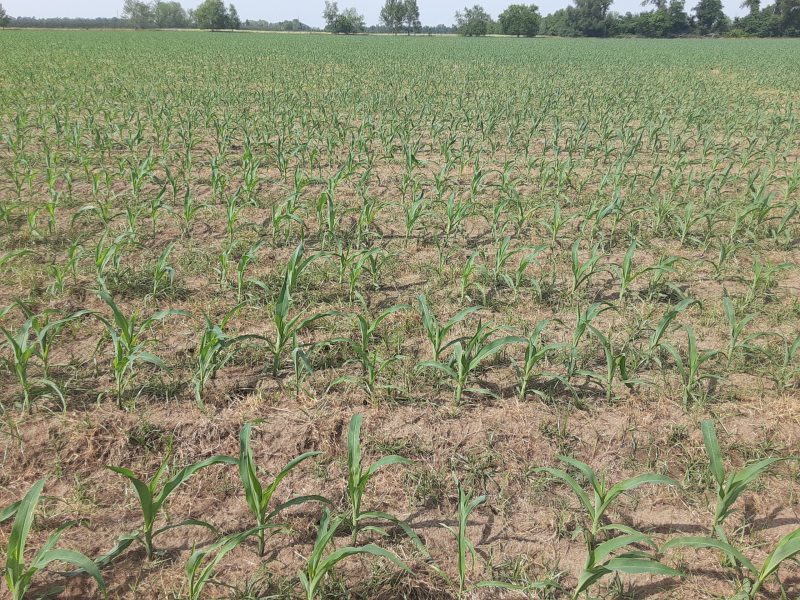
Young field corn in Jackson County with some early weed competition on April 9, 2020. Credit: Ethan Carter, UF/IFAS
–
Today, much of the area’s corn ranges from knee to waist high (stages V6 to V12). Most fields are relatively weed free, due to successful pre/post-emergence weed programs, coupled with quickly developing canopies that shade out weeds as they germinate.
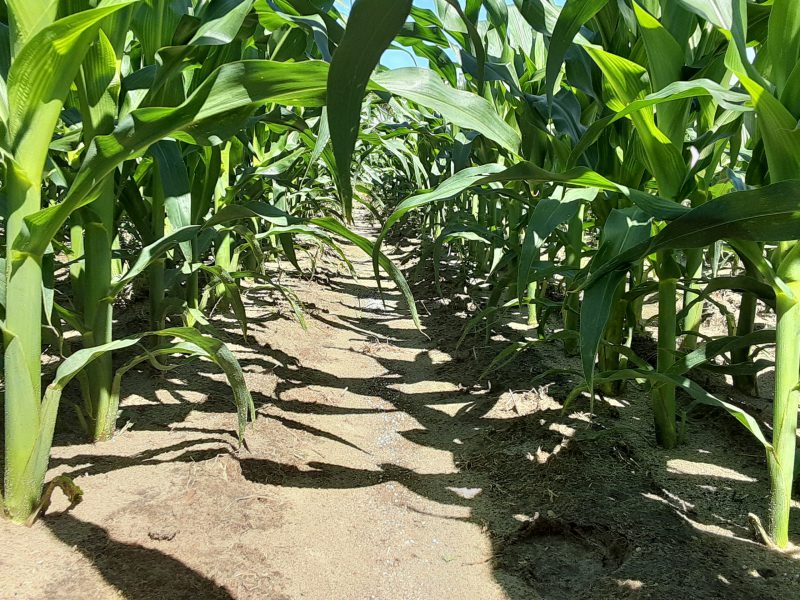
Same corn field as the image above, just taken post herbicide application 15 days later, on April 24th, now weed free. Credit: Ethan Carter, UF/IFAS
–
The next several weeks will be crucial for farmer’s as they decide if a fungicide application is needed when the crop begins to tassel. At or prior to tasseling is the common fungicide application window to help control several types of leaf blight and rust. This decision is based on factors such as variety susceptibility, field history, and the current/expected weather conditions. Two of the most notable foliar disease that farmers can struggle to control in corn are Northern corn leaf blight and southern rust.
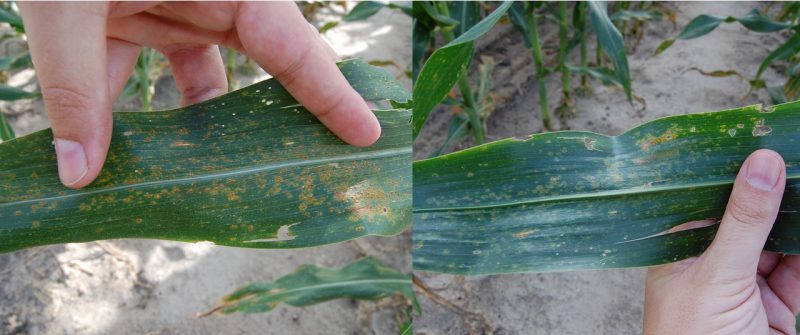
Typical southern rust signs with orange to light brown, small and densely packed pustules on the upper leaf surface (left). The lower leaf surface has yellow flecks and very few if any pustules. These symptoms and signs can distinguish southern rust from common rust (right). Credit: Nick Dufault, UF/IFAS
–
Depending on the production system, corn is grown under irrigation or in a dry-land setting. Weather patterns and summer rains play a large roll in the yield determination of dry-land corn. On average, the western Panhandle has more timely rain bands and can easily obtain around 200 bu/ac for dry-land corn. It’s a different story for the central and eastern Panhandle, where dry-land corn can range from no yield (completely lost due to heat & moisture stress) to 100 bu/ac. Irrigation removes the stress associated with dry-land production, and assuming the crop is not wanting fertility or impacted by disease or other pests, can lead to average yields of 200+ bu/ac.
The life of a farmer is hard. Regardless of planning and preventative measures, it seems like something unexpected always happens. The thunderstorms and severe weather that moved through the Panhandle on April 23rd served as an unwanted demonstration of this phenomenon. Many crop fields suffered damage from either wind, flooding, or both. Wind damage was apparent in older (taller) cornfields, especially those with higher plant populations and thin stems, or fields lacking their historical tree-lines and windbreaks post Hurricane Michael.
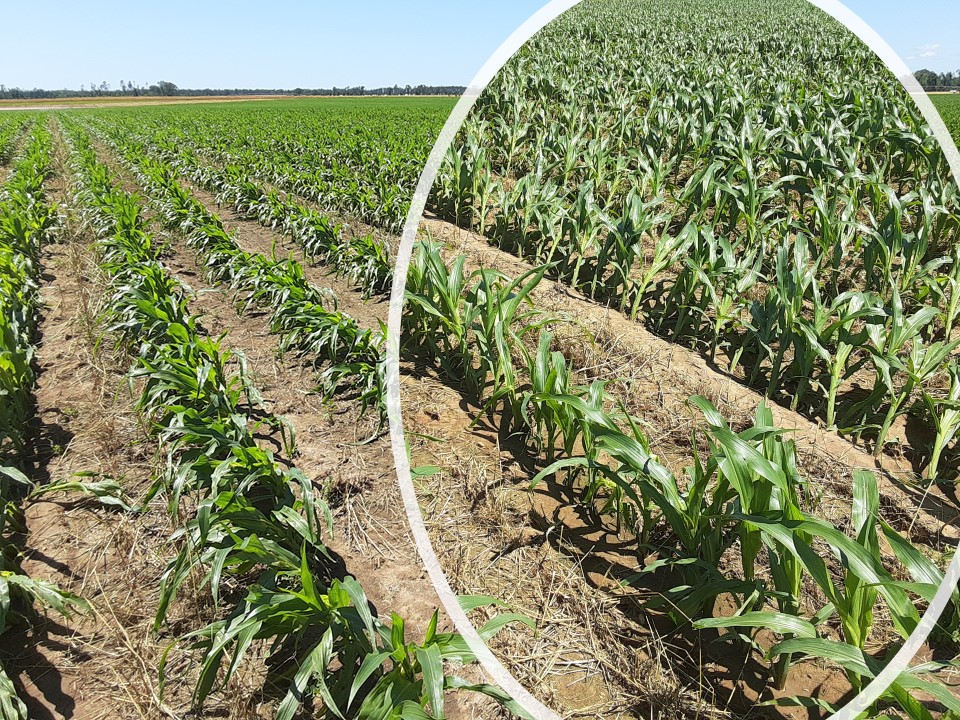
Example of lodging issues in corn after the recent thunderstorms and high winds. Credit: Ethan Carter, UF/IFAS
–
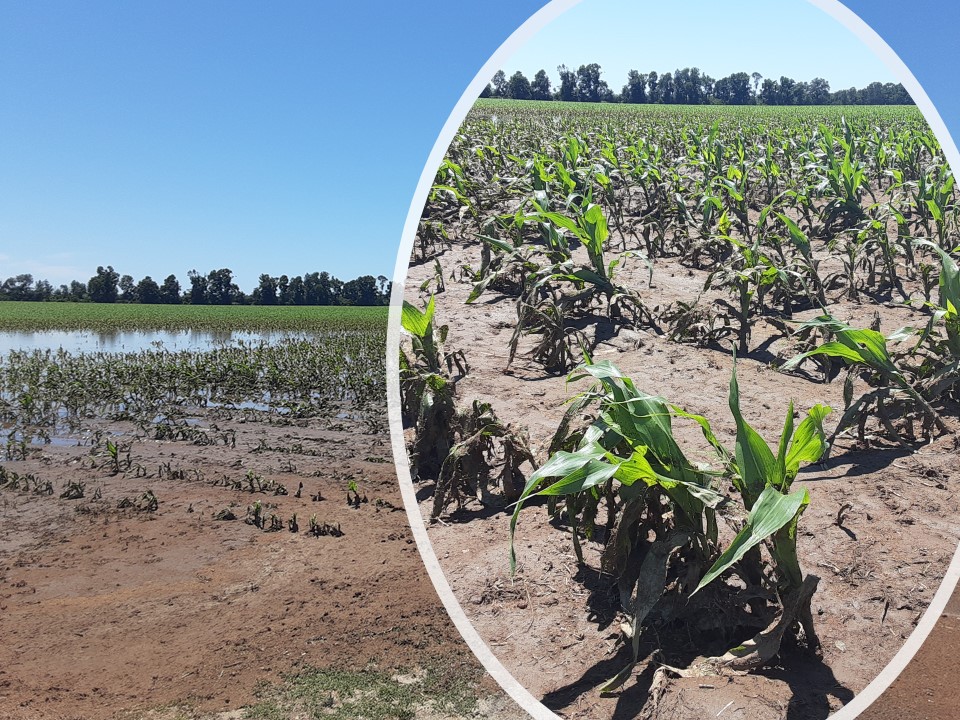
Corn field suffering from flooding and lodging after our recent heavy rains. Credit: Ethan Carter, UF/IFAS
–
Standing water also caused localized flooding in lower areas of fields, killing plants. It also halted the land prep and planting of peanut and cotton crops, which have been ongoing the past few weeks and will continue into June. Fields with heavier soil and clay content take longer to dry out. Driving farm equipment across saturated fields risks making deep ruts or getting stuck.
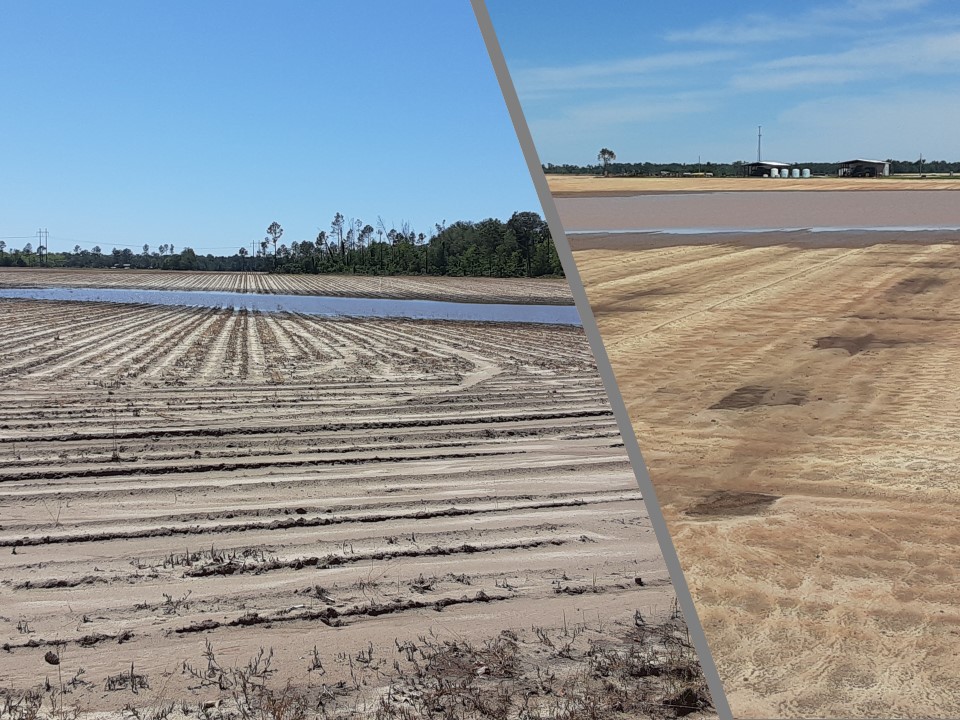
Example of saturated fields that were being prepped for planting after the recent thunderstorms. Credit: Ethan Carter, UF/IFAS
–
The harvest window for corn is dependent on the farmer’s end goal for the crop. Silage corn will be chopped in May/June, while grain corn will be harvested in late July through August. Local extension offices will provide yield checks in grain fields by request, to help determine a field’s average yield/acre. During this process the county agent will use a measuring wheel to walk out a predetermined representative area of row footage to harvest (normally at least 1 acre, but entries for the national corn yield contest are a minimum of 1.25 acres). The total pounds of harvested corn from the area is multiplied by its adjusted moisture content, and then divided by the total weight of a completely dry bushel of corn. This number represents the total harvested bushels from the area, and is be divided by the total area harvested to determine bushels/acre.
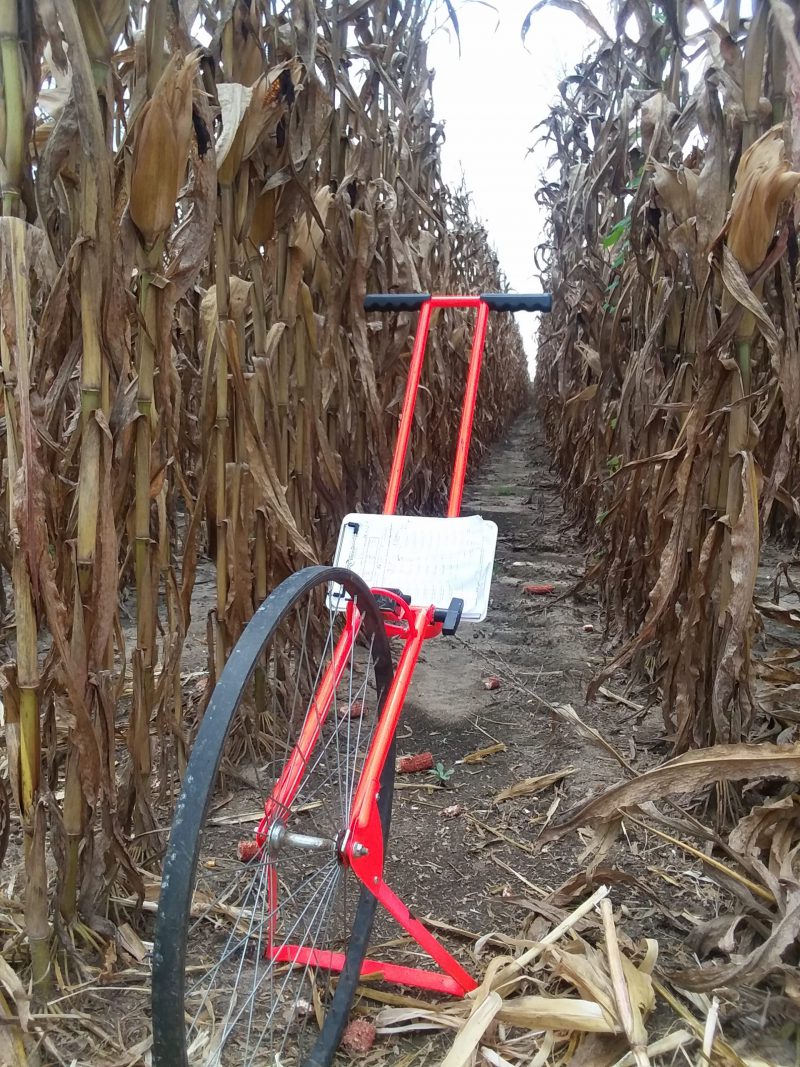
Yield checks require a little leg work, row footage is tracked using the measuring wheel and the clipboard is needed to record data throughout the process. Credit: Ethan Carter, UF/IFAS
–
For corn or crop production related questions, or to inquire about yield checks, contact your local extension office. You may also want to consult the UF/IFAS Field Corn Production Guide for specific recommendations for Florida.
- 2024 Panhandle Row Crop Short Course Highlights & Presentation Links - March 8, 2024
- 2024 Wiregrass Cover Crop Field Day – Rescheduled – March 29 - February 16, 2024
- Panhandle Row Crop Short Course – March 7 - February 9, 2024
